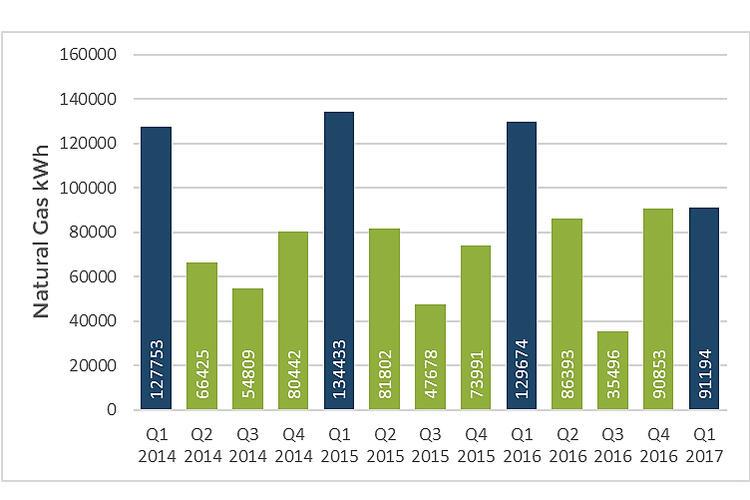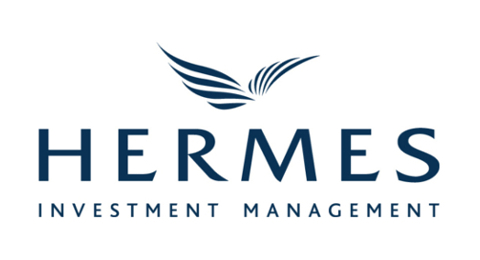Hermes Rolls Out Programme that Improves Efficiency and Comfort Levels
06 December 2017Hermes Rolls Out Programme that Improves Efficiency and Comfort Levels
06 December 2017In 2016, Hermes Investment Management partnered with managing agent JLL and sustainability consultant Carbon Credentials to implement the Collaborative Asset Performance Programme in two high energy-consuming assets, 2 Cavendish Square and 8-10 Great George Street. This programme focuses on optimising technology and engaging with stakeholders to reduce energy use and improve conditions for occupiers. Following the success of the pilot, Hermes is now rolling it out to a further 12 high-consuming properties.
Key Facts
- PAYBACK WITHIN 12 TO 18 MONTHS
- OVER £30,000 ANNUALISED ENERGY COST SAVINGS IN FIRST TWO BUILDINGS
- 105 TONNES LESS CO2 ANNUALLY IN FIRST TWO BUILDINGS
- IMPROVED CONDITIONS FOR OCCUPIERS
- GREEN APPLE AWARD 2017
Situation
Hermes Investment Management is one of the largest real estate managers in the UK. Hermes’ Responsible Property Management (RPM) programme includes an objective to reduce absolute CO2 emissions by 40% across its standing portfolio by 2020 versus 2006.
2 Cavendish Square and 8-10 Great George Street were identified as being higher energy users than their peers, according to the BBP Real Estate Environmental Benchmark (REEB). Whilst energy was already actively managed in both buildings through Hermes’ RPM programme, there was a clear opportunity to further improve performance.
Following site audits, Hermes partnered with managing agent JLL and sustainability consultant Carbon Credentials to implement the Collaborative Asset Performance Programme (CAPP) in both buildings. This programme focuses on optimising technology and engaging with stakeholders to reduce energy use, costs and CO2 emissions, at the same time as improving conditions for occupiers.
Actions
1. Diagnostic: Data capture devices were installed on the Building Management System (BMS) in both buildings and on half-hourly meters and sub-meters for electricity and gas. The CAPP team and JLL engaged with the Facilities Management (FM) teams, Mechanical and Electrical (M&E) engineers and BMS engineers in both buildings to bring them on board. Data was visualised and analysed via algorithms that identify opportunities for performance improvement.
2. Implementation: The CAPP team engaged with the site teams on recommendations to deliver energy savings and improve conditions for occupiers. The BMS contractors updated the software and the M&E engineers validated and remedied faults. JLL oversaw the programme and signed off measures with the Hermes Director of Property Management. Building managers kept occupiers up to date with improvements and savings, and provided reports.
At 8-10 Great George Street:
- The diagnostic had identified that sensors influencing operation of Air Handling Units (AHUs) were not correctly calibrated. The CO2 sensors were recalibrated and control of AHU fan speeds was linked to the CO2 readings from these sensors, so the right level of fresh air was circulated for occupiers.
- Two boilers were running simultaneously for most of the working day, causing high energy use and excessive strain on plant that would shorten its lifetime. The boilers were reconfigured to meet heat demand with just one boiler running at a time.
At 2 Cavendish Square:
- The diagnostic had identified that AHUs were enabled through time schedules, rather than responding to actual internal conditions. To allow AHUs to respond to CO2 levels and circulate air effectively and efficiently, a CO2 sensor and controller were both installed. Control was then linked to CO2 readings from the sensors, so the right level of fresh air was circulated for occupiers.
- An outdoor air temperature sensor, controlling much of the plant, was located in the basement. This caused inefficient operation, as plant was being triggered by conditions in the basement rather than outdoors. A new sensor was installed on the roof, providing correct temperature data and enabling conditions to be regulated effectively and efficiently.
- Temperatures were controlled via fixed set points. These were reconfigured to allow for seasonal fluctuations.
3. Monitoring and Control: The buildings continue to be monitored to ensure that they consistently perform to their best as changes occur over time, e.g. in response to seasonal variations in temperature, changes in occupancy and faults in equipment. Savings are maintained and verified to the international standard IPMVP.
Building on the success of these two initial projects, Hermes has rolled out the CAPP to 12 additional sites, including 33 Glasshouse Street, where it has been used to support BSRIA’s Soft Landings process on the newly refurbished office areas.
Financials
- Payback on investment within 10 months at 8-10 Great George Street based on electricity savings alone and 19 months at 2 Cavendish Square.
- Over £30,000 annualised energy cost savings across both buildings.
- Ongoing service funded through occupier service charges, with savings for occupiers greater than costs.
Benefits
- Improved conditions for occupiers, including better air quality and enhanced temperature controls. Studies have shown that reducing CO2 levels improves comfort, increases cognitive function and boosts productivity.i
- 35% less natural gas use at 2 Cavendish Square and 23% less electricity use at 8-10 Great George Street, versus the baseline, which was derived from 2013-2015 performance data. This is based on project measurement and verification to the international standard IPMVP.
- 105 tonnes of CO2 emissions saved annually across both buildings, versus the baseline.
- Reduced maintenance costs and capital expenditure on equipment replacement, which can be valued over time as the impact of using equipment efficiently takes effect.
- Enhanced sustainability credentials – 8-10 Great George Street won a Green Apple Award 2017 and 2 Cavendish Square won JLL the Hermes RPI Award for Best Commercial Sustainability Initiative 2016.
[i] Allen et al, Journal of Environmental Health Perspectives (2016)
Challenges and Achievements
COLLABORATION
How to overcome barriers to deployment?
In any BMS optimisation programme, collaboration is vital. At 2 Cavendish Square and 8-10 Great George Street, Hermes, JLL and Carbon Credentials engaged early on with the M&E engineers, FM team Integral, and BMS contractors DCS, whose buy in would be fundamental to the success of the programme. They held kick-off meetings to align everybody’s interests around performance improvements and to make it clear that CAPP was something new that the teams had not been expected to do before. Site teams also receive ongoing alerts about exceptions, e.g. if AHUs turn on at weekends when they should be off, so they can act promptly. In addition, the CAPP team is setting up a portal where the site team can easily look at unexpected consumption.
WELLBEING
How to unlock the potential of BMS optimisation for wellbeing?
Detailed BMS data monitoring raised the visibility of factors affecting the comfort and productivity of people at 2 Cavendish Square and 8-10 George Street. For example, CO2 levels are now monitored and equipment managed effectively to ensure that levels do not rise to a point which affects productivity. In line with RESET standards, 600ppm is set as the performance benchmark and 1000ppm as the minimum standard. Temperature data is also analysed to identify hot and cold zones, so measures can be put in place to eliminate these. However, more can be done around wellbeing. Carbon Credentials is therefore installing additional sensors and developing the CAPP platform to increase visibility of indicators affecting occupier comfort, so building teams can make further improvements. These include temperature, humidity and CO2, with the potential for PM2.5 and VOC sensors as well. Increased engagement with occupiers, such as tracking of helpdesk queries and complaints, as well as occupier workshops, will be used to monitor the impact of these changes.
Find out more
Sharon Brown
Associate Director – Real Estate Risk and Environmental Impact
*Please note that the information on this page was supplied by the BBP Member and the BBP assumes no responsibility or liability for any errors or omissions in the content


